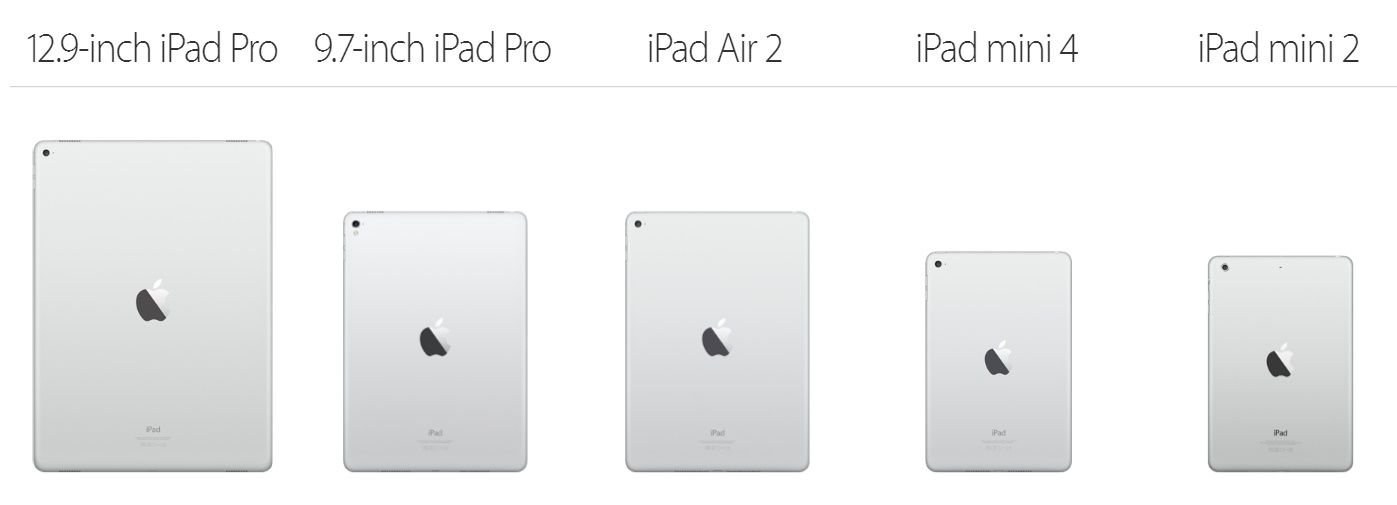
The latest KGI Securities note to investors, in regard to a 10.5 inch iPad, came amidst plenty of rumors surrounding Apple’s next product lines, such as word of a Touch-ID enabled MacBook with an OLED touchstrip, a concept that is outlandish enough to trigger questions about much of its authenticity, considering Tim Cook’s frequently reiterated “no-touchscreen on MacBooks” philosophy.
By contrast, the iPad is a wildcard in many respects, and one product that has evolved more than other Apple lines in recent years.
The iPad comes in the widest array of sizes, starting from the 7.9 inch iPad Mini, to the 9.7 inch iPad Air 2 and iPad Pro, and ending with the massive 12.9 inch original iPad Pro, and it started out originally, as a simple slate heavily reliant on third-party apps. That was back in 2010, and five years later, the iPad has grown into a mature device featuring laptop-like functionality and processing power.
Theoretically, should Apple create an 10.5 inch iPad, there are a few reasons why this could be a good idea: first of all, the way consumers use an iPad has fundamentally changed, from the paradigm of a simple touchscreen device to control with your fingertips, to a screen that is capable of connecting to a range of great physical keyboards, and with support for a proprietary stylus.
In essence, consumers are finally starting to use their iPads in the same way as they use their ultraportable laptops, though with a few small caveats, such as a slightly more obscure way to manage files and folders in iOS, compared to using a file manager such as OS X Finder, and the inability to run desktop applications.
By that token, it’s possible that scaling up the size of future iPad tablets, is a trend that Apple is willing to pursue, as a response of emerging devices like the Surface Book, and Surface Pro 4, two devices that have been received favorably among consumers looking for a great hybrid option between a laptop and a tablet, with the added bonus of being able to run a desktop operating system.
A 10.5 inch iPad would be a bridge between the 9.7 inch iPad Pro and the 12.9 inch original iPad Pro, which means that many of the characteristics of both these latest tablets could be featured in the new mid-size iPad Pro, at which point, the aging iPad Air 2 would lose much of its relevance to new customers, with mixed reactions to be expected from current owners of older iPads.
The array of applications expected to be typical of an average 10.5 inch iPad owner won’t be too far off from what we are already seeing from current iPad Pro users. Whether one chooses Apple’s own Smart Keyboard, or any number of third party alternatives, the iPad Pro has officially become one of the best typing devices available, which is great for students, and anyone looking for a lightweight device capable of running apps like Microsoft Office, for daily tasks, such as creating formatted documents, spreadsheets, graphs, and even image and video editing, to some degree.
Apple’s brand new size iPad is rumored to be scheduled for 2017, which gives Apple plenty of time to work on improved internals, and perhaps an A10X 64-bit CPU, as well as more memory and storage options.
Quad audio could very well be a possibility too, and, it almost goes without saying, Apple Pencil support, which is expected to go completely mainstream with future iOS devices, as well as the next Apple Magic TrackPad, at least according to a recent patent.
Ready to shop?
If you are looking for the perfect Apple iPad, PortableOne has you covered with a great selection of Apple iPads, including the latest 9.7 inch and 12.9 inch iPad Pro.